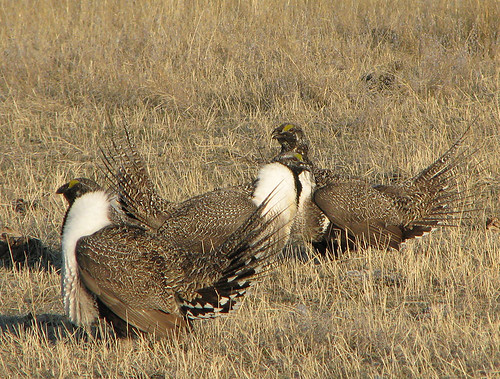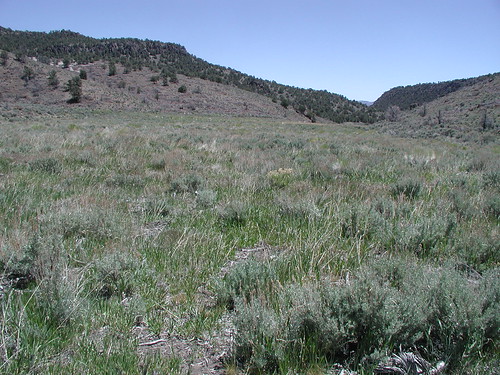
“What’s good for the birds is good for the cows,” says Duane Coombs, ranch manager for Smith Creek Ranch in central Nevada. That’s why Coombs and his neighbor on the other side of the Desatoya Mountain Range are working to restore habitat for the western sage-grouse, a chicken-sized bird that is being considered for endangered species listing by the U.S. Fish and Wildlife Service. Sage-grouse are a keystone species for the sagebrush ecosystem.
“They are really a neat bird,” says Coombs. “The males gather in the spring and strut their stuff to attract the females.”
Western sage-grouse, sometimes referred to as sage chickens, are native to western North America. These ground birds live entirely on a diet of sagebrush all winter long. In the past few years, however, their numbers have been dwindling, due to human impacts, invasive cheatgrass and large-scale wildfires.
Unfortunately for the birds—and for the ranchers who graze cattle in the west—portions of sage-grouse habitat are being overtaken by trees, specifically pinyon pine and junipers. These trees can invade sagebrush rangeland, crowd out brush and grass, reduce water infiltration and increase soil erosion.
To help remedy this problem, Coombs and his neighbor are removing pinyon pine and juniper trees. This will open up habitat for sage-grouse and create a passageway from one side of the mountain range to the other. Removing the trees will not only improve habitat for the birds, but also provide forage for livestock and restore the natural ecosystem.
The unique thing about this project is that it will be done on public land administered by the Bureau of Land Management (BLM). Both ranchers recently applied for funds from USDA’s Natural Resources Conservation Service (NRCS) through the Environmental Quality Incentives Program (EQIP) Sage Grouse Initiative.
Thanks to the 2008 Farm Bill, ranchers can now apply for funds on public lands in partnership with federal land management agencies. Within the next five years, approximately 570 acres of pinyon and juniper trees will be removed from key sage-grouse habitat. The BLM has been able to treat only some of the identified acres due to limited funding. Now with EQIP funding, the ranchers have stepped in to continue the work the BLM started.
“It’s a great partnership effort, all of us working together to help these birds survive,” says Coombs. “I’m looking forward to the day when they fill the sky like they did in the old west.”
For more information about the Environmental Quality Incentives Program, please visit our website.
Check out more conservation stories on the USDA blog.
Follow NRCS on Twitter.


